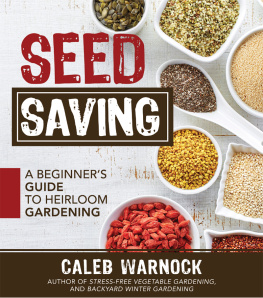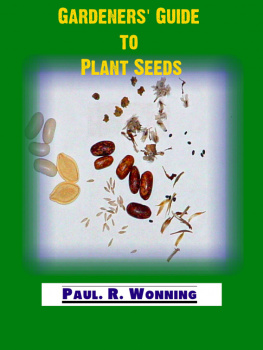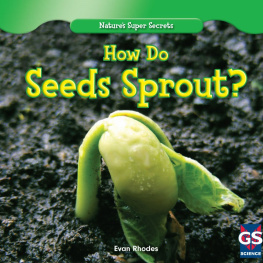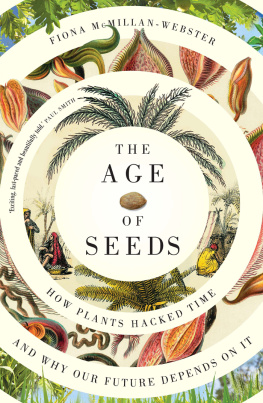Little Wanderers
by
Margaret Warner Morley
Yesterday's Classics
Chapel Hill, North Carolina
Cover and Arrangement 2010 Yesterday's Classics, LLC
All rights reserved. No part of this book may be reproduced or retransmitted in any form or by any means without the written permission of the publisher.
This edition, first published in 2010 by Yesterday's Classics, an imprint of Yesterday's Classics, LLC, is an unabridged republication of the work originally published by Ginn and Company in 1900. This title is available in a print edition (ISBN 978-1-59915-317-9).
Yesterday's Classics, LLC
PO Box 3418
Chapel Hill, NC 27515
Yesterday's Classics
Yesterday's Classics republishes classic books for children from the golden age of children's literature, the era from 1880 to 1920. Many of our titles are offered in high-quality paperback editions, with text cast in modern easy-to-read type for today's readers. The illustrations from the original volumes are included except in those few cases where the quality of the original images is too low to make their reproduction feasible. Unless specified otherwise, color illustrations in the original volumes are rendered in black and white in our print editions.
Contents
Why Plants Travel
P LANTS are great travelers; they often wander far and wide. Sometimes they even cross the ocean and take up their abode in a new land.
The oxeye daisy, our common meadow buttercup, and the little Canada thistle, now so abundant everywhere, are not native Americans, but came here from Europe.
Very likely they sailed in the ships with the early settlers and took possession of the New World with them. They are so much at home now that most people think they always grew here. But they did not, and when the Pilgrim Fathers looked over their new home the fields were not white with daisies nor yellow with buttercups.
No doubt the Pilgrim Fathers were glad of this, for daisies and buttercups often cover the fields and spoil the hay, and while "daisies in the meadow" seem very lovely to the city people who go to the country for the summer, daisies in the hay are another matter, and the farmers do not think them lovely at all.
BUTTERCUPS
It is not the grown-up plants that travel, as a rule, though some of them do. For you must know the plant world is a topsy-turvy kind of place where the parents stand still at home and the children wander about.
Of course the children are the seeds, and they are free, but when they once settle down and begin to grow their wandering days are over.
Plants with roots are great home-bodies; nothing short of actual violence can make them move from the spot they have chosen. Frequently it happens that they die if moved.
Not so with the seeds, however.
They wander about, and their parents often take great pains to send them out into the world.
SOME HAPPY WANDERERS
For the children of the plants are very apt to die if they remain at home too long. They need to find a place in which to settle down and grow, and it is often better for them to do this at a distance from their parents.
Plants eat what is in the soil, and each kind of plant needs some particular earth food. When plants of one kind are crowded too closely in a place the earth is often impoverished, and the plant might die out if it were not able to find a fresh growing place. Then, again, if the seeds always fell close to the parent plant, the earth would soon become too crowded to support more than a very few new plants.
So for these and other reasons it is best for the seeds to go while they are able and find a place for themselves.
Nearly all seeds are provided with some way of moving about, and while some of them go very short distances others go very long ones.
They travel for their profit, and why may we not say for their pleasure? For if a plant is able to feel and enjoy at all,and I for one believe it is,then the dandelion seeds must feel very joyous sailing before the wind in the early summer, and later the thistle-down and the milkweed seeds, scudding before the breeze.
Those That Fly with Plumes or Down
Dandelions
E VERYBODY is well acquainted with the dandelion, but not everybody knows that it was brought to this country from Europe. It is not probable that a dandelion seed could come on the wings of the wind three thousand miles across nor is it probable that people would bring it on purpose.
Very likely dandelion seeds were accidentally mixed with the grass and clover seeds brought from their homes in the Old World.
Before the coming of the white man the Indian did not see the roadsides yellow with dandelions, nor did he see dandelions at all, excepting a kind that grows sparingly way up north and another that grows in the Rocky Mountains.
The European dandelions liked the New World and when they had the chance spread very fast, so that now they are everywhereat least in the East.
The reason they were able to spread so is that the dandelion seeds were able to fly.
If they had not flown away but had dropped down close to the parent plant and grown there, they would not have been allowed to spread much; for people do not like dandelions in their fields and lawns, and try hard to root them out.
This would be easy if the dandelions kept together in patches. But they seem to say "catch me if you can" as they fly on the wings of the wind, dropping down here, there, and everywhere, striking root and merrily growing.
The parent dandelion takes very good care of its seed children, and plans for their future success by giving each one a little plume by which it can be blown about by the wind.
Everybody knows the pretty, fluffy, white-headed dandelions that come after the yellow flowers.
WHITE-HEADED DANDELIONS
Children often blow on them "to see what time it is." If all the seeds fly away but one, they say it is one o'clock; if two remain, they say it is two o'clock, and so on.
They also blow on them to see if "mother wants me," as every child knows.
Each little silky part that flies away is a seed case and its plume.
SEED CASE AND PLUME MAGNIFIED
If you look carefully at the part of the dandelion that flies about, you will see the little brown seed case at one end, shaped something like a tiny cucumber, and with little teeth near its top.
Out of its top grows a silky white stalk, and at the end of this is a tuft of soft little hairs by means of which the seed case can float in the air.
Each dandelion seed case contains one little seed, but the case fits the seed so closely that most people speak of the whole thingseed case and seed togetheras the seed. The proper name for such a seed case and its seed is akene. Not all akenes have plumes.


















